Norman Crockatt just isn’t a well known title, however the British intelligence officer was answerable for probably the most controversial choices of World Conflict II.
When the Conflict Workplace in London created Navy Intelligence Part 9 (MI9) on December 23, 1939, it selected the 45-year-old Crockatt to move the brand new group. The previous head of the London Inventory Trade, he was seen as “the best form of chap” for the publish regardless of his scant expertise in navy intelligence.
MI9’s mission was to assist British navy personnel escape and evade the enemy. That may imply smuggling maps and miniature compasses to prisoners of struggle held in Nazi camps or aiding shot-down airmen in enemy territory to evade seize and get again to Britain or Allied-controlled territory. MI9 was a small department of British intelligence, however in June 1943 Crockatt had the accountability of constructing a momentous determination in regards to the destiny of 80,000 Allied POWs incarcerated in Italian jail camps. The Allies have been gearing as much as invade Italy and Crockatt needed to determine whether or not the POWs there ought to keep put and look ahead to the arrival of Allied troops or get away and attempt to make their very own technique to freedom.
Crockatt selected the previous choice, stating in an order issued on June 7, 1943, that “officers commanding jail camps will be certain that prisoners of struggle stay inside camp. Authority is granted to all officers commanding to take needed disciplinary motion to stop particular person prisoners of struggle making an attempt to rejoin their very own models.” A number of elements influenced Crockatt’s remaining determination. First was the bodily state of the prisoners, lots of whom have been believed to be malnourished after years in captivity. Then there was the prospect of tens of hundreds of prisoners on the unfastened, offering straightforward targets for vengeful Nazis and fascist Italians loyal to Mussolini. Above all, Crockatt believed that the Allies’ advance north via Italy could be swift and British and American troops would shortly liberate the camps. Why danger a mass breakout and jeopardize the lives of so many males?
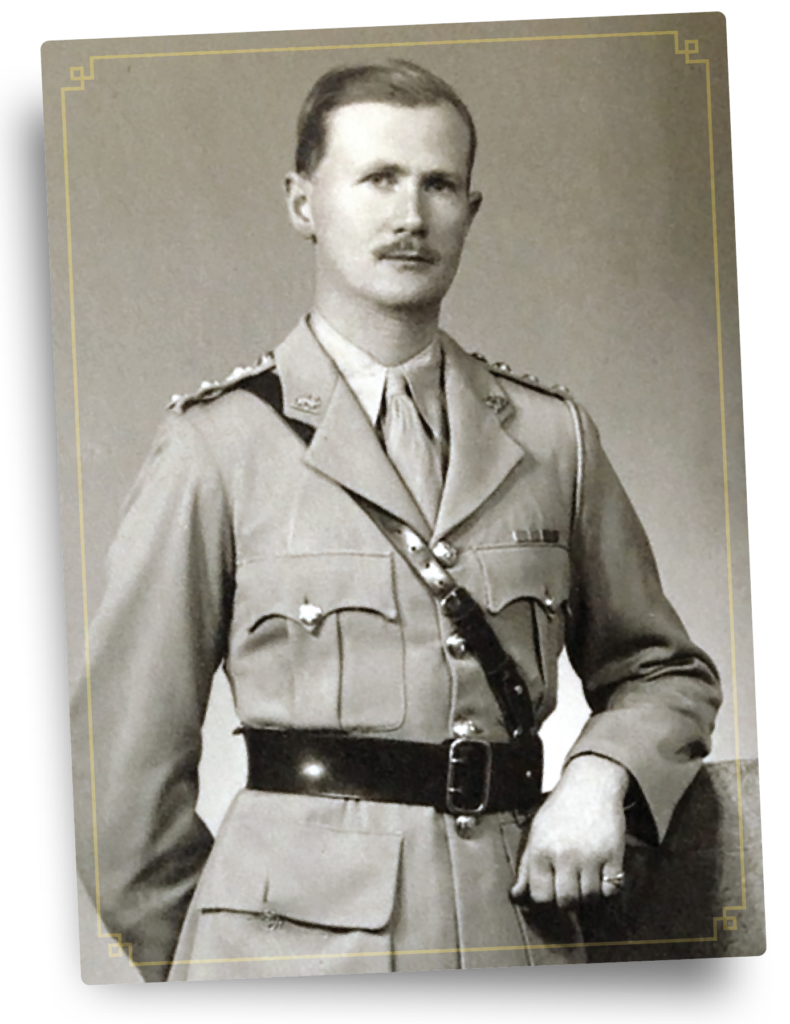
(Courtesy www.simondsfamily.me.uk)
To get phrase to the POWs of what they need to do, Crockatt used a secret code contained inside the script of a well-liked BBC program, The Radio Padre, a favourite among the many prisoners. However what MI9 didn’t do, remarkably, was inform British prime minister Winston Churchill or his Conflict Cupboard of his determination. From the outset of negotiations with Italy Churchill had made plain his want to see POWs returned to the Allies as soon as the Armistice got here into power. Article 3 of the Italian give up settlement stipulated that prisoners have been to be “instantly turned over to the Allied commander-in-chief and none of those could now or at any time be evacuated to Germany.” When the Armistice was made public on September 8 the Italian Conflict Ministry saved religion with its obligations and instructed 80,000 Allied prisoners that they have been free to go away. However the majority remained of their camps, the place they risked falling beneath the management of the Germans.
Churchill was aghast when he realized of Crockatt’s order for POWs to remain put, however by then it was too late for a lot of prisoners. Opposite to what Crockatt had anticipated, the Germans had wasted little time in taking on many of the camps and have been quickly looking the estimated 30,000 who had defied the stay-put command and brought flight.
Nothing may very well be performed now to liberate the prisoners within the camps, however Churchill demanded a plan to rescue the fugitives. The person chosen to guide the operation was Lieutenant Colonel Charles “Tony” Simonds, who had joined MI9 in 1941 after combating alongside Normal Orde Wingate in what’s now Ethiopia. Based mostly in Cairo, Simonds was answerable for A Pressure, which had accountability to arrange escape strains for Allied prisoners throughout occupied Europe. Summoned to Allied Forces HQ in Algiers on September 23, Simonds acquired orders to plan a plan to rescue the hundreds of escaped Allied prisoners roaming Italy. He had at his disposal personnel from Britain’s 1st Airborne Division, Second Particular Air Service Regiment (2SAS), and Particular Operations Government (SOE), in addition to the American Workplace of Strategic Companies (OSS). The mission acquired the codename Jonquil.
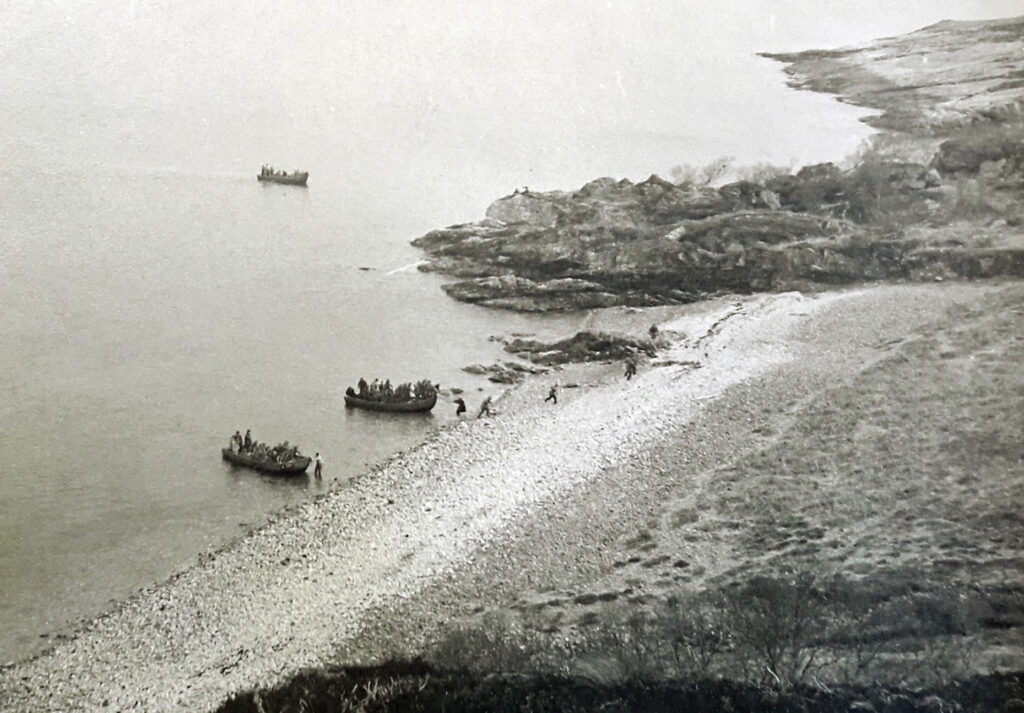
(Courtesy Gavin Mortimer)
Simonds established his headquarters at Brindisi, a port on the jap heel of the Italian boot, and organized a gathering with officers from 2SAS, billeted 75 miles northwest within the coastal metropolis of Bari. This elite British particular forces unit had been fashioned in North Africa in 1941 by brothers David and Invoice Stirling, and whereas stationed in Cairo Simonds had heard tales of their effectiveness in raiding Axis targets deep inside their territory. David Stirling had been captured in January 1943 however Invoice, accountable for 2SAS, despatched two of his officers, Main Felix Symes and Captain Peter Energy, to Brindisi to debate the rescue operation.
They arrived on the night of September 26 and for the following three hours Simonds briefed the SAS officers on the character of the mission. Standing in entrance of a giant map of the east coast of Italy, Simonds defined that he had divided the area into 4 areas, from Ancona within the north to Ortona within the south, a spread of roughly 100 miles. Simonds outlined the position of 2SAS within the operation thus: “In every space two events will go in, one to be dropped by parachute inland, with the item of sending all P.W.s right down to the coast, and one social gathering to land by sea to kind a seaside social gathering to information, shepherd, and defend the prisoners, and in addition to oversee their embarkation after having signaled the boats.” There have been seven troopers in every social gathering, and the boats have been vessels that will rendezvous off the seashores to tackle the escapees.
Moreover, Simonds deliberate to have two different events landed in essentially the most southerly of the 4 areas to gather numerous prisoners identified to have gathered near the city of Chieti. Hooked up to every A Pressure staff could be an Italian speaker to query villagers in regards to the prisoners’ whereabouts.
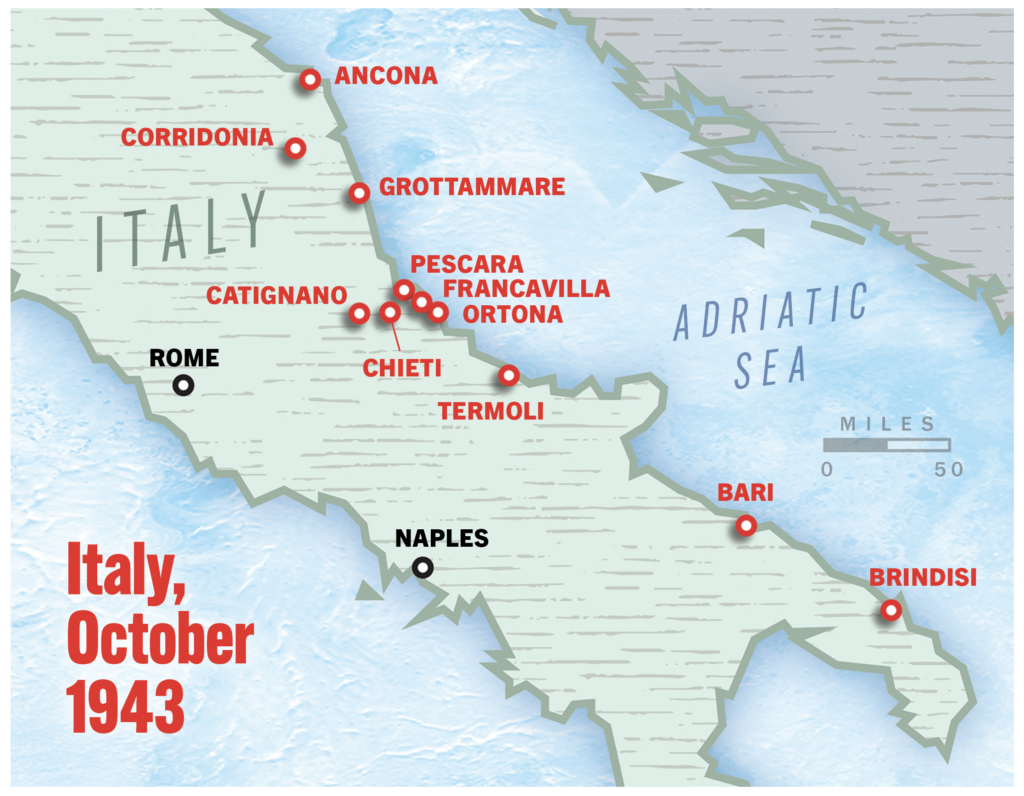
Simonds recruited a handful of interpreters domestically, however he additionally may exploit the linguistic expertise of the American OSS, which had a sub-unit referred to as the Operational Group (OG) with the position of organizing, equipping, and coaching indigenous populations to combat widespread enemies. Not like Britain within the first half of the twentieth century, America had a “melting pot” society that enabled the OSS to recruit operatives from Chinese language, Japanese, Greek, Norwegian, Italian, and different communities. The usual OG comprised 4 officers and 30 enlisted males, and the Italian unit was commanded by 1st Lieutenant Peter Sauro. Born in Yonkers, New York, to Italian mother and father, the 31-year-old Sauro had been a tree surgeon earlier than the struggle; he was small and previous his bodily prime, however he had a great grasp of his ancestral language.
Sauro and his part reached OSS headquarters in Algiers on September 8, the day that Italy formally surrendered. Designated Unit A, First Contingent, Operational Teams, 2677th Headquarters Firm Experimental (Provisional) AFHQ, Sauro’s OG was the primary of its variety to be activated and spent the following two weeks in parachute coaching.
On September 25 OSS HQ knowledgeable Sauro of the A Pressure mission to spherical up escaped Allied prisoners in Italy. He had 24 hours to pick 18 males for the operation and equip them as needed. They acquired the codename Simcol. As soon as that they had reached Italy, Sauro’s staff of Italian audio system traveled by car to Bari, the place A Pressure had established its new base and the place Simonds launched Sauro to the SAS officers. Simonds requested him to supply one among his males to every of the 4 SAS parachute events and one other to every of the 5 groups who would land by fishing boat. Sauro and his remaining 9 members of the OG would participate in a parachute operation unbiased of the British.
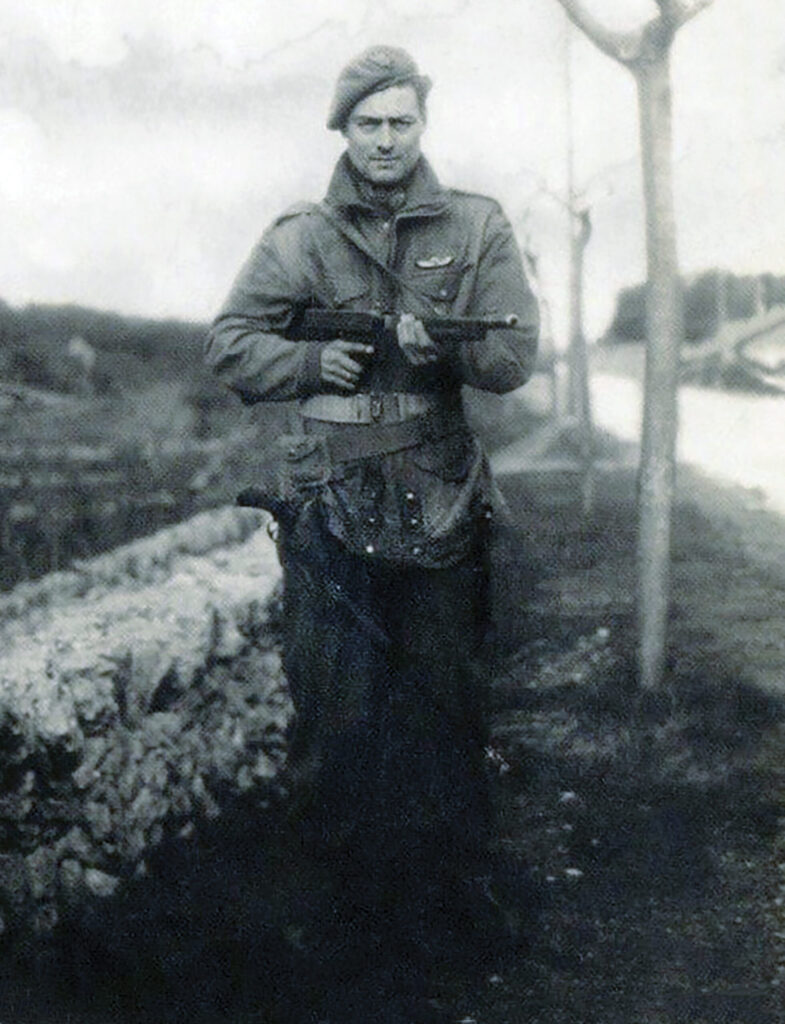
(Courtesy Gavin Mortimer)
Sauro’s staff left Bari airfield within the late afternoon of October 2 for the brief flight north to Catignano, a village 20 miles inland from Pescara. They parachuted onto the drop zone with out incident.
A couple of hours after Sauro’s social gathering had flown from Bari, a fleet of eight schooners sailed out of the town’s port beneath the command of SAS Captain Peter Energy, a 32-year-old Irishman. Their voyage up the jap coast took them longer than anticipated due to fierce combating at Termoli, 125 miles north of Bari, the place for 3 days a battle raged between the British 78th Infantry Division and the German 1st Parachute Division. At Termoli, Energy and his 12 males exchanged the schooners for LSI’s (Touchdown Ship, Infantry) and continued on their mission, lastly going ashore at 2:00 a.m. on October 7 at Grottammare, 100 miles north of Termoli and 50 miles north of Sauro and his males. They’d landed a number of miles south of their meant disembarkation level so that they marched north in a single day via torrential rain to succeed in the right stretch of coast.
On the evening of October 9-10 Energy signaled ashore a naval dinghy stocked with provides. It additionally introduced the message that it will not be again once more “till the nights of October 24/25 and 25/26 owing to the moon, and that each one prisoners should be launched into these nights.” Energy’s social gathering had a formidable activity forward of them. Deep inside enemy territory, with none wi-fi units—none had been supplied regardless of repeated requests—that they had no technique of extraction for a fortnight.
Energy divided his power into 4 teams, three of which might search the encircling countryside to the north, west and south. The fourth social gathering, beneath the command of Sergeant Main Invoice Marshall, would stay by the coast to obtain prisoners as they have been introduced in, and conduct a sweep of the coastal space for some other escapees.
When he set off north on October 10 Energy had two males with him: Bob Tong, a 20-year-old non-public from Shropshire, and sergeant Joe Marino, one among Sauro’s OG interpreters. Energy saved a each day tally of their accomplishments in his log. On the night of October 11, he famous that they contacted 14 prisoners, together with two South African officers. They subsequent day, “British officers arrived at 11.00 hrs and instructed us there have been a variety of prisoners close to Corridonia.” On October 13 they contacted one other six prisoners, and after they reached the Corridonia space the following day they discovered a prisoner who stated he knew of 30 extra. They discovered 9 extra on October 15, and on the sixteenth made contact with a communist who was hiding about 30 escapees.
On the return march to the seaside, Energy collected extra prisoners, all of whom he corralled right into a farmhouse about two miles from the coast beneath the supervision of Tong and Marino. When he reached Marshall’s base camp on October 20 Energy discovered 34 extra POWs that Marshall and his males had collected over the week. “All going properly,” wrote Energy in his journal. Now they only needed to sit tight and look ahead to the naval vessels to reach in 4 days.
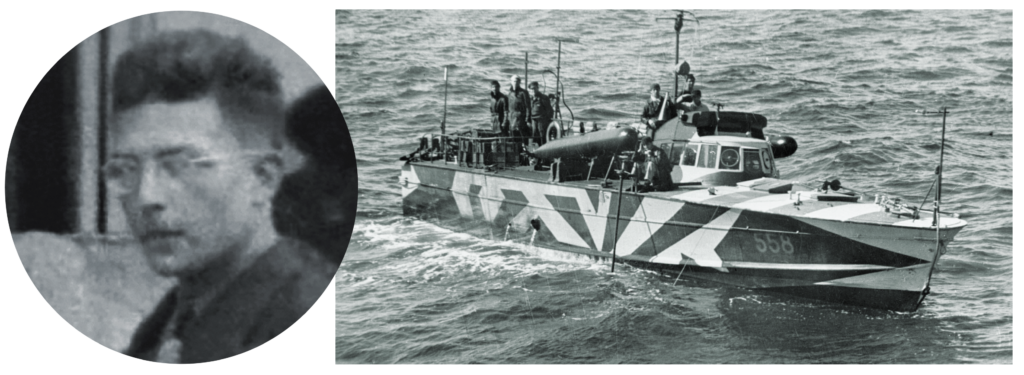
(United States Holocaust Memorial Museum, reward of Miriam Davenport Ebel; IWM HU 43228)
Their fortunes turned the following morning. A routine German patrol noticed Marshall’s base camp and within the ensuing firefight two SAS have been captured and a variety of Germans killed and wounded. On listening to the firing, Energy shepherded the POWs from the farmhouse right into a ravine the place they remained for the day. To make issues worse, Sergeant Marino was unwell, a situation Energy described in his journal as “delayed V.D.”
Luckily, the Germans didn’t launch a follow-up operation. Energy posted lookouts on the coastal highway however they noticed nothing untoward. On October 23 SAS events from the opposite three operational areas started arriving with their haul of wandering POWs. In complete, famous Energy, by the morning of the twenty fourth that they had “about three or 4 hundred prisoners.” Many have been excited on the prospect of their impending salvation, whereas others have been drained, hungry, and irritable. Months and years as prisoners and weeks as fugitives had eroded a lot of their navy self-discipline. Ultimately, nonetheless, the SAS led them to inside a couple of hundred yards of the seaside.
The boat was scheduled to reach at half previous midnight on October 25, and Energy’s directions to the prisoners have been to “are available in events not bigger than three.” Marino, although nonetheless debilitated by sickness, was to behave as their dispatcher. Energy and Tong began out for the seaside at 11:40 p.m. They’d hardly arrived earlier than they heard “bursts of computerized hearth” after which the unmistakeable sound of vehicles arriving. Panicking, the gathered POWs “stampeded again into the hills.” Energy and Tong ran north alongside the seaside away from the sound of gunfire. They didn’t know if the 2 captured SAS males had revealed the evacuation plan beneath questioning by their captors, or if the Germans had found the massive variety of prisoners on their very own.
At daylight Energy and Tong continued their trek north, believing the operation had been fatally compromised. However that night a Royal Naval launch arrived and picked up the SAS social gathering, now beneath the command of Sergeant Main Invoice Marshall and together with Joe Marino. After the earlier evening’s panic solely 23 prisoners remained of the 400 delivered to the seaside. Energy and Tong didn’t return to Allied strains for a month, after they sailed into Termoli in a fishing boat piloted by an Italian aviation officer. They introduced 5 POWs with them.
Pete Sauro discovered himself in a predicament much like Energy’s. Having parachuted into Catignano, Sauro and his males had collected 250 fugitives inside 24 hours. The People instructed the POWs to muster on the coast at Francavilla, some 20 miles due east from Sauro’s operational base. A naval vessel was purported to arrive on the nights of October 4, 6, 8, and 10 between midnight and 1:00 a.m. and flash a lightweight each quarter-hour. The password was “Jack London.”
The three different SAS events scouring the countryside west and south of Pescara have been additionally directing POWs towards Francavilla. In complete 600 had reached the coast: 350 British, 200 Yugoslav, and 50 American. However, because the SAS report said: “They’d signalled for 4 nights (October 4, 6, 8, and 10), with out success, although on the fourth evening what was believed to have been a German MTB [Motor Torpedo Boat] switched its searchlight on them, and there was an alternate of fireplace. On the identical time a truckload of German troops arrived on the coast highway above them.”
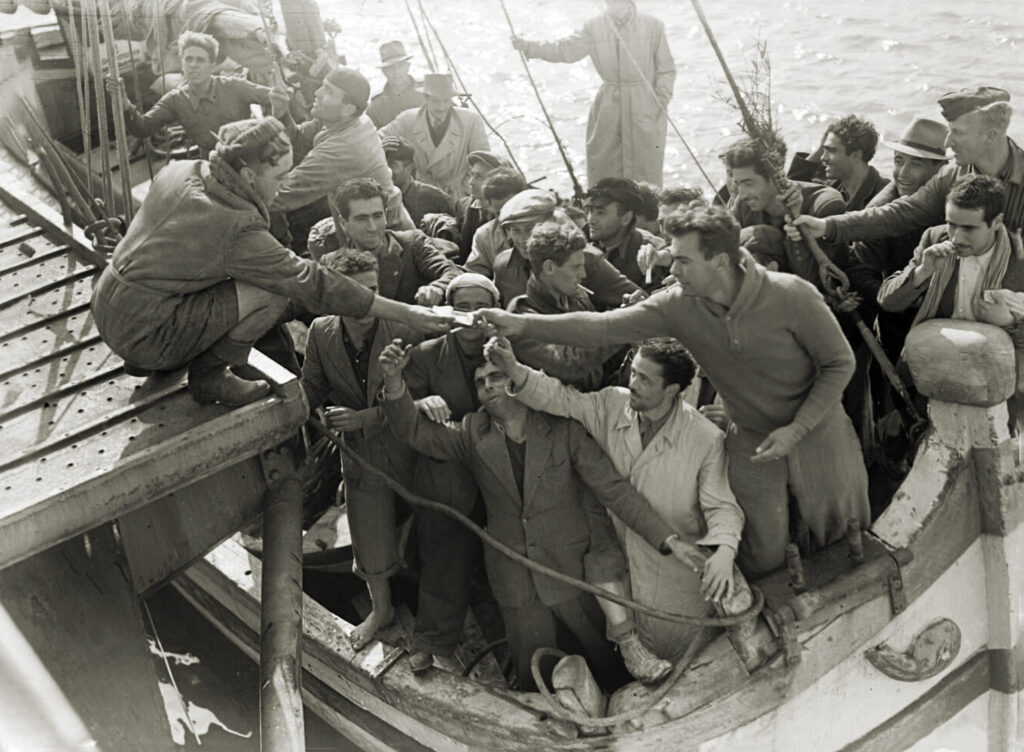
(IWM A 20823)
The SAS officer overseeing the evacuation was Captain Raymond Lee. A colourful character who craved pleasure, Lee was actually a Frenchmen named Raymond Couraud who had received the Croix de Guerre for his actions with the French International Legion in Norway, however later abandoned. Arrested, he spent a while in jail, then operated in France as a gangster earlier than becoming a member of the SOE after which the SAS beneath his assumed title.
Lee instructed the prisoners “to separate up and make their approach via the strains.” He added that Termoli, 75 miles away, was now in British fingers after a three-day battle, and it was safer to journey overland than by sea, the place they risked assault from enemy vessels or plane.
Sauro issued related directions to half of his OSS staff, however he and 4 males continued to scour the realm for escaped prisoners, briefing these they discovered on easy methods to attain Allied strains. Sauro despatched three extra operatives south on November 3, whereas he and one different remained looking out. Ultimately the pair have been captured by the Germans.
Captain Lee returned safely to Termoli and volunteered on the evening of November 2 to accompany a search and rescue social gathering aboard an Italian MTB. With him was Captain Richard Lewis, a 26-year-old Illinoian and Harvard graduate (who would win the Pulitzer Prize in 1976 for his biography of Edith Wharton), and Augusto Ruffo, an 18-year-old Italian recruited to A Pressure, whose father was the sixth Duke of Guardia Lombarda. “We have been a part of an Anglo-American intelligence outfit identified in Washington as MIS-X [Military Intelligence Service X] and in London as MI-9,” wrote Lewis in his memoir. “In Italy, we had varied cowl titles.” One among these was A Pressure.
The Italian MTB left Termoli and arrived on the rendezvous level off Silvi, seven miles north of Pescara. The vessel’s skipper flashed the popularity sign to shore, the place the A Pressure staff, together with a British Lieutenant Lyte, noticed it. With them have been 12 POWs. Earlier than they might reply to the sign, stated Lyte, “machine gun hearth and 20mm Breda hearth [were] directed at a ship about 1½ miles off shore.”
Lewis and Ruffo have been beneath deck speaking on their bunks when the firing began. “I may see tracer bullets flying and will hear shouts of consternation and fast orders from above,” recalled Lewis. “My younger Italian pal, within the midst of a sentence, fell ahead from the bunk to lie useless on the ground; a bullet had penetrated the facet of the boat and entered his again.”
Lewis flattened himself on the ground as rounds tore via the MTB. When he finally emerged on deck, he counted the corpses of half a dozen Italian troopers. “Flames have been licking alongside the railing,” remembered Lewis. “From out within the blackness I may hear the determined enchantment of the Italian sailors who had jumped overboard with their life belts and have been floating about crying for assist.”
Additionally within the water was Captain Raymond Lee. Regardless of being shot within the shoulder, he managed to swim the mile ashore the place he was subsequently discovered by Lyte. Lewis additionally swam ashore, staggering up the seaside and right into a dune. “As I watched, exhaustedly, the fireplace on board reached the torpedo and the boat blew up.”
Lewis was now in the identical predicament as the boys he had got down to rescue. He struck out south and initially made good progress, counting on the generosity of “variety and unquestioning Italian peasants.” One supplied him with an previous swimsuit. Though ditching his uniform eliminated his standing as a soldier and raised the likelihood that he may very well be executed as a spy if captured, Lewis believed the tattered swimsuit gave him a greater likelihood of reaching the Allied strains than his fight fatigues. “I used to be nearly nearby of the British lookout posts after I obtained caught,” stated Lewis. “The lengthy, drawn-out battle of the Sangro River had begun, and the entrance strains have been far too full of life for me to aim to cross.”
Although the British Eighth Military had secured Termoli on October 6, the advance up the east coast of Italy become a bloody slog. They lastly crossed the Sangro (32 miles northwest of Termoli) on November 23, nevertheless it required one other 5 weeks of laborious combating earlier than the first Canadian Infantry Division captured the deep-water port of Ortona.
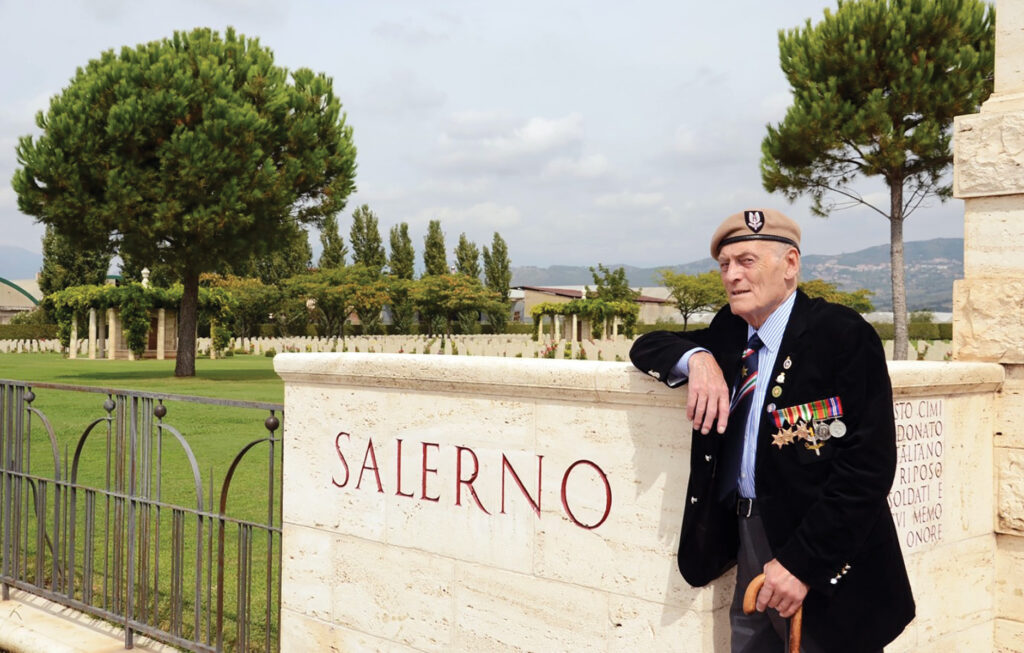
(Courtesy Gavin Mortimer)
Because the combating raged, Lewis hunkered down in a stone cottage close to the village of Crecchio, about 12 miles north of the Sangro. “Whereas each armies surged ahead and fell again in what, from my fretful vantage level, appeared sheer tactical messiness, I made ineffective little forays towards making my technique to security, solely to retreat every time,” recalled Lewis.
The American lastly made it via the strains on December 17, “having swallowed sufficient uncooked pink wine to offer me the requisite braveness.” Captain Lee, who had reached Termoli after a 10-day trek, had knowledgeable A Pressure that Lewis had been killed on the MTB, so his arrival was greeted with delight.
Simonds estimated that about 900 former prisoners made the identical journey as Lewis and Lee within the autumn of 1943, both by boat or on foot. Some acquired A Pressure’s help however others relied on their very own initiative. It was a disappointing tally contemplating that an estimated 30,000 prisoners had walked out of their camps in September; in complete it’s estimated that between 11,000 to 14,000 POWs reached freedom, both in southern Italy or by crossing into impartial Switzerland.
These concerned within the A Pressure operation shortly pinpointed the foremost flaw within the operation: the shortage of radio communication. Colonel Russell B. Livermore of OSS’s 2677th Headquarters Firm had been unable to contact any of the boys on Simcol and wrote in his report, “My response…is that hereafter we stock out all our personal operations and discontinue these ‘joint’ ones with the British.”
Lieutenant Colonel Invoice Stirling, commanding officer 2SAS, cited a number of different causes for the operation’s ineffectiveness, together with the “extraordinarily erratic” timekeeping of the navy that made coordination with the boys ashore tough. However his main grievance echoed Livermore’s: “Signalling preparations weren’t passable,” he wrote. “Walkie-Talkies between shore and ship may need been helpful. Wi-fi communications with the bottom would have prevented the ignorance of the events of the amended orders issued.”
What annoyed Stirling most was the missed alternative. “[G]iven a easy plan with a dependable technique of communication, and R.Vs [rendezvous], which may very well be trusted, it may need produced extra passable outcomes.” Ultimately, it remained a misplaced alternative.
